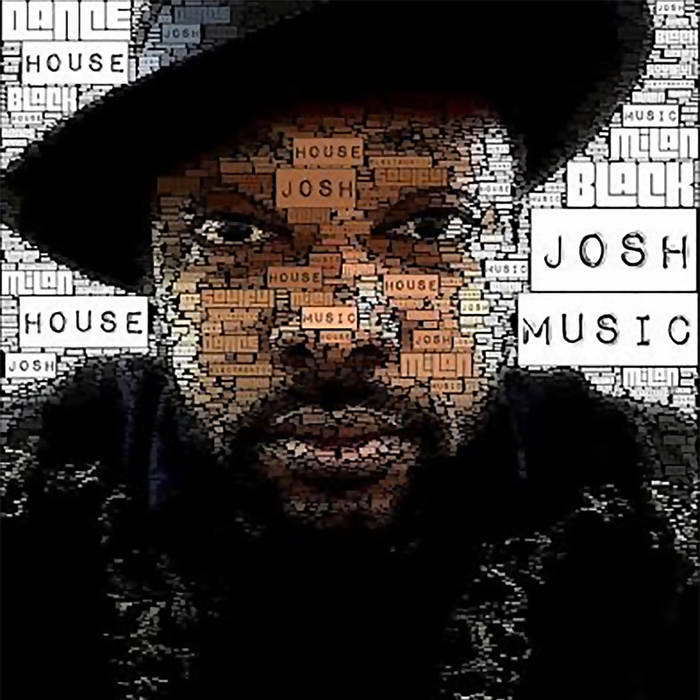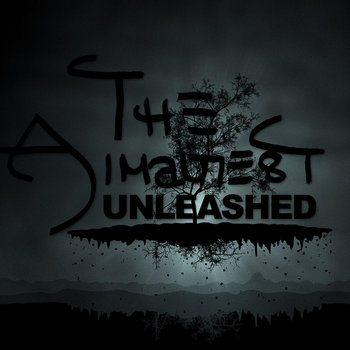
Written by Philip Sherburne — The only thing the media loves more than a success story is a spectacular fall, and thus the death knell for EDM has been ringing louder and louder in recent months.
"Vegas turns up nose at superstar DJs," Page Six reported in late March. A week before that, the Miami Herald noted, "On eve of Ultra Music Festival, the dance-music craze is slowing down." And after Miami Music Week, the unofficial party crawl accompanying Ultra, two Beatport editors noted, "Half-empty pool parties, quiet streets in Miami Beach, short lines, and a relative availability of cabs and car services all told the same tale": "MMW was dead."
Predictions of EDM's imminent demise are hardly new. Way back in September 2013, The Quietus asked if the EDM "bubble" was about to burst, and the same question kept cropping up again and again throughout 2014 and 2015, on blogs like Death and Taxes as well as mainstream outlets like Forbes—which had, ironically, done as much as any mainstream outlet to blow up the EDM bubble in the first place, via its power-ranking guesstimations of just how much scrilla Skrillex and his ilk were actually pulling down.
Time and again, the story was the same: The festival industry was bloated and top-heavy. DJs were paid too much. A former subculture was being inflated into a mass-market fad, and—as with "electronica" and disco before—a market correction was in store.
Ever since Robert F.X. Sillerman's company SFX Entertainment—a media conglomerate encompassing festival promoters like ID&T and Made Event, the marketing agency Fame House, and the digital music store Beatport, among other companies—began its rapid slide toward bankruptcy in early 2016, industry watchers have been waiting with bated breath for the other shoe to drop. (Full disclosure: I worked part-time for Beatport from 2010 to 2012.) Just as SFX's fall is, in many ways, a classic tale of hubris, EDM's '10s explosion could be perceived as one that’s synonymous with overreach. That might be one reason why the recent news of Avicii’s retirement from touring was treated not just as one individual's struggles with stress, overwork, substance abuse, and poor health, but rather as the end of an era.
Of course, the death of EDM doesn't mean the death of dance music, and it doesn't even herald the end of mass-market dance music. Dance and electronic music comprise vast, overlapping ecosystems divided by taste, age, class, and geography; most of those systems have coexisted in one form or another for decades, and they will continue to do so.
But EDM—the hype-fueled, glowstick-twirling meeting of Southern California rave culture, Vegas bombast, youthful hedonism, and corporations eager to cash in—was always an unsustainable proposition. Like capitalism, it was predicated on limitless growth—ever bigger main stages, ever fatter paychecks for the DJs, ever brighter sparklers jutting from the jeroboams in the VIP section. But as everyone knows, that shit can't go on forever. The bursting of the EDM bubble was a foregone conclusion. Here's a timeline of events leading up to it.
December 2011: According to Google Trends, peak dubstep is reached.
December 2011: Skrillex posts Aphex Twin's "Flim" to his Facebook page. The peanut gallery, unimpressed, asks, "Where's the drop?" "Where's the drop" will go on to become an ironic catchphrase almost as annoying as the phenomenon it purports to lampoon.
February 2012: Skrillex peaks.
May 2012: Nestlé's Willy Wonka brand commissions an original dubstep song for a Nerds commercial.
June 2012: Robert F.X. Sillerman—the media mogul who, in the '90s, consolidated dozens of regional promoters into the concert behemoth Live Nation, before selling the company to Clear Channel for $4.4 billion—announces his intention to spend $1 billion buying up companies related to EDM events and culture. "Disco Donnie" Estopinal's Louisiana-based Disco Productions is his first major acquisition.
June 2012: Swedish House Mafia announce their imminent breakup and farewell tour, just 23 months after releasing the debut single from their collaborative alias. The "farewell" phase of the trio's career will last nine months.
July 2012: Nine people are stabbed, non-fatally, at a Swedish House Mafia concert in Dublin, Ireland. One week later, three more people are non-fatally stabbed at a Swedish House Mafia concert in Buckinghamshire, England.
December 2012: Lichtenstein's favorite keytar-toting self-help author, Al Walser, finagles his way into the 2013 Grammy nominations for Best Dance Recording with a truly dire song called "I Can't Live Without You." It's hard to say for whom the fiasco is more embarrassing: the clueless Grammy committee that nominated an obviously unqualified candidate, or co-nominees Avicii, Calvin Harris, Skrillex, and Swedish House Mafia, who have to explain to their mothers that no, just because they're DJs doesn't mean they're like that guy in the astronaut suit.
February 2013: SFX buys Beatport for an estimated $50 million, adding to a portfolio including the Dutch company ID&T, the promoters behind Tomorrowland and Sensation, and Dayglow Productions, the outfit behind "The World's Largest Paint Party."
February 2013: The Los Angeles Times investigates 14 drug-related deaths at regional EDM festivals since 2006, drawing attention to a persistent and disturbing public-health issue. The deaths, along with others at Electric Zoo, Future Music Festival Asia, and beyond, underscore the biggest challenges facing EDM as a culture: an ineffective "war on drugs," a marketplace full of mystery powders, and many young people experimenting with unfamiliar substances for the first time. (Snickering about overpaid DJs and corporate trend-chasers aside, drug-related deaths within dance music should be taken very seriously, if that's somehow not already clear.)
February 2013: Baauer's "Harlem Shake" goes viral, continuing electronic dance music's transformation from subculture into mass-media meme.
March 2013: Avicii goes country in a headscratching main-stage set at Ultra that draws comparisons to Spinal Tap Mark II: Jazz Odyssey.
July 2013: Swedish DJs Daleri reveal the paucity of ideas in main-stage EDM by stringing together near-identical riffs from 15 current tracks by big-name artists like Chuckie, Hardwell, and W&W into the minute-long "Epic Mashleg." The result sounds like an imperial death march for fascist jungle animals.
August 2013: Forbes places Calvin Harris atop its Electronic Cash Kings list, estimating his earnings at $46 million.
September 2013: In advance of its October 2013 IPO, SFX Entertainment attempts to popularize the term "EMC," or "Electronic Music Culture." Chances are, you've never heard the term "EMC" outside an official SFX communiqué. In an interview with BuzzFeed, the company also touts Beatport's Klout score. (As of April 2016, Klout is still a thing, but you'd be forgiven for not knowing that.)
September 2013: The deaths of two festival attendees from allegedly drug-related causes lead Electric Zoo to cancel its final day of programming.
September 2013: Afrojack admits to the New Yorker, "I have no idea what I'm supposed to do with all of this money." In the same article, it is revealed that he has only a fuzzy notion of how measures, or "bars," work in musical timekeeping.
September 2013: Avicii peaks.
October 2013: SFX prices its initial public offering at $13 per share; the stock closes down 8.5 percent at $11.89, just shy of the highest it will ever reach. "SFX Stock Flops in IPO Debut," reports the Wall Street Journal.
March 2014: SFX CEO Robert F.X. Sillerman is captured on video flipping the bird and grabbing his crotch as he descends from a private jet wearing a gold dollar-sign pendant and a sideways ball cap. Afterwards, the mogul attempts to reassure puzzled financial analysts that the music community has told him, "Fuck yeah, we get it." SFX's stock slips to $6.75, roughly half of its October 2014 IPO opening of $13.
March 2014: The SLS South Beach Hotel is refashioned as the Avicii Hotel, complete with a branded ice cream truck; an Avicii pop-up shop stocking shirts, hats, water bottles, and condoms; and 3D cut-outs of the Swedish DJ inside the elevators, as reported by Thump. For $800, visitors get a room and a swag bag. Meanwhile, Avicii is hospitalized for his gallbladder, cancelling sets at SLS and on the Ultra main stage.
March 2014: Replacing Avicii on the main stage of Ultra Music Festival, in a jab at Martin Garrix's ubiquitous "Animals," Deadmau5 plays a big-room version of "Old MacDonald Had a Farm."
April 2014: Martin Garrix peaks.
April 2014: Walt Disney Records releases Dconstructed, featuring Avicii, Armin van Buuren, Axwell & Sebastian Ingrosso, and other main-stage names tackling music from The Lion King, Frozen, Monsters University, and other films.
May 2014: “Saturday Night Live” sends up EDM culture with "When Will the Bass Drop?"—a sketch almost as insufferable as the behavior it mocks.
May 2014: Billboard reports Robert F.X. Sillerman's 2013 compensation at $30 million, more than double his 2012 take. The company's $6.95 stock price is down nearly 50 percent from its IPO.
July 2014: On stage, mid-set, David Guetta stares into the void and realizes the futility of human existence.
August 2014: Forbes places Calvin Harris atop its Electronic Cash Kings list, estimating his earnings at $66 million—representing 43 percent year-over-year growth compared with the previous year.
September 2014: Replacing Avicii, whose continued health issues forced the Swedish superstar to cancel his TomorrowWorld main-stage appearance, Kygo plays a slow, breezy set full of synthesized steel drums and pan flutes, leading critics to wonder if tropical house will soon eclipse big-room EDM as the electronic style du jour.
January 2015: Zedd peaks.
March 2015: Beatport launches a free streaming app, seriously overestimating listeners' desire to hear the few long-tail psytrance titles they can't already get from the other major streaming services.
May 2015: Calvin Harris peaks.
June 2015: Lithuanian producer Ten Walls goes on a homophobic rant on Facebook, gets dropped from his booking agency like a hot rock. On the plus side, he proves that the so-called underground can be just as sus as high-fiving EDM bros. Moral of the story: Never trust anyone.
August 2015: Forbes places Calvin Harris atop its Electronic Cash Kings list. His earnings remain flat at $66 million.
August 2015: The Zac Efron and Emily Ratajkowski movie We Are Your Friends "craters" on its first weekend, breaking a record as the worst opening for a wide-release Hollywood studio picture, according to The Hollywood Reporter.
September 2015: Thousands of TomorrowWorld festival attendees are stranded in mud when heavy rain leads organizers to cut off access to festival grounds. Billboard reports that some attendees walked miles "to an area where Ubers and cabs were charging exorbitant cash fees to return to Atlanta, which was problematic as TomorrowWorld is a cashless festival."
February 2016: SFX files for bankruptcy.
March 2016: It is announced that SFX will put Beatport up on the auction block.
March 2016: Avicii announces his intention to retire from touring, following his summer run of festivals and dates in Ibiza and Las Vegas.
April 2016: Mike Posner's "I Took a Pill in Ibiza" ("I took a pill in Ibiza/ To show Avicii I was cool/ And when I finally got sober, I felt 10 years older/ But fuck it, it was something to do") goes to No. 9 (and rising!) on the Hot 100 chart, partly on the strength of Seeb's tropical-house remix of the song.
"Whew! This is a guy, being vulnerable!" raves Bob Lefsetz, the dark prince of normcore music crit. "Just like a 'Hamilton'-goer who hates rap suddenly realizes he was wrong, EDM-haters are enraptured by this sound."
Click here to read from this article's source.












































